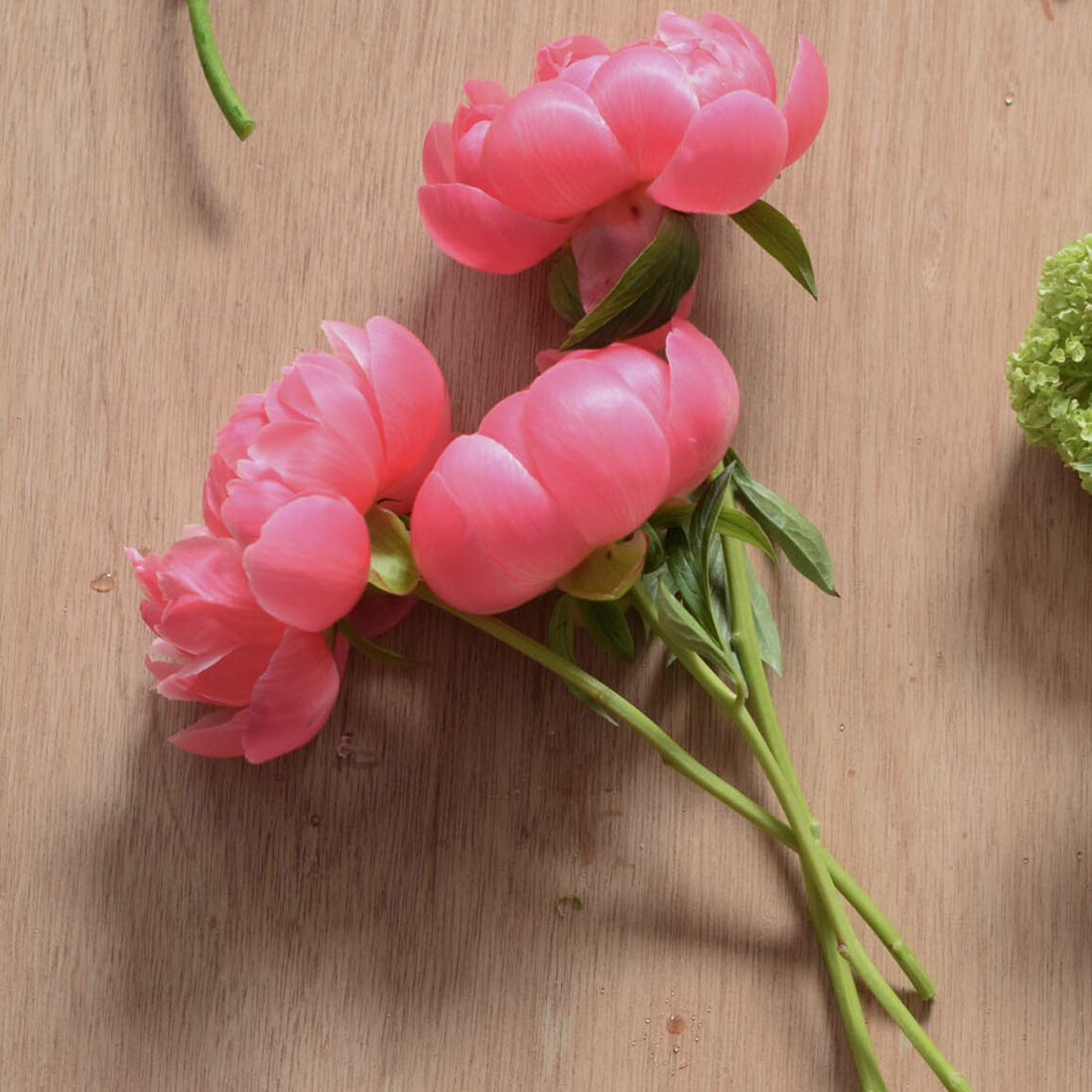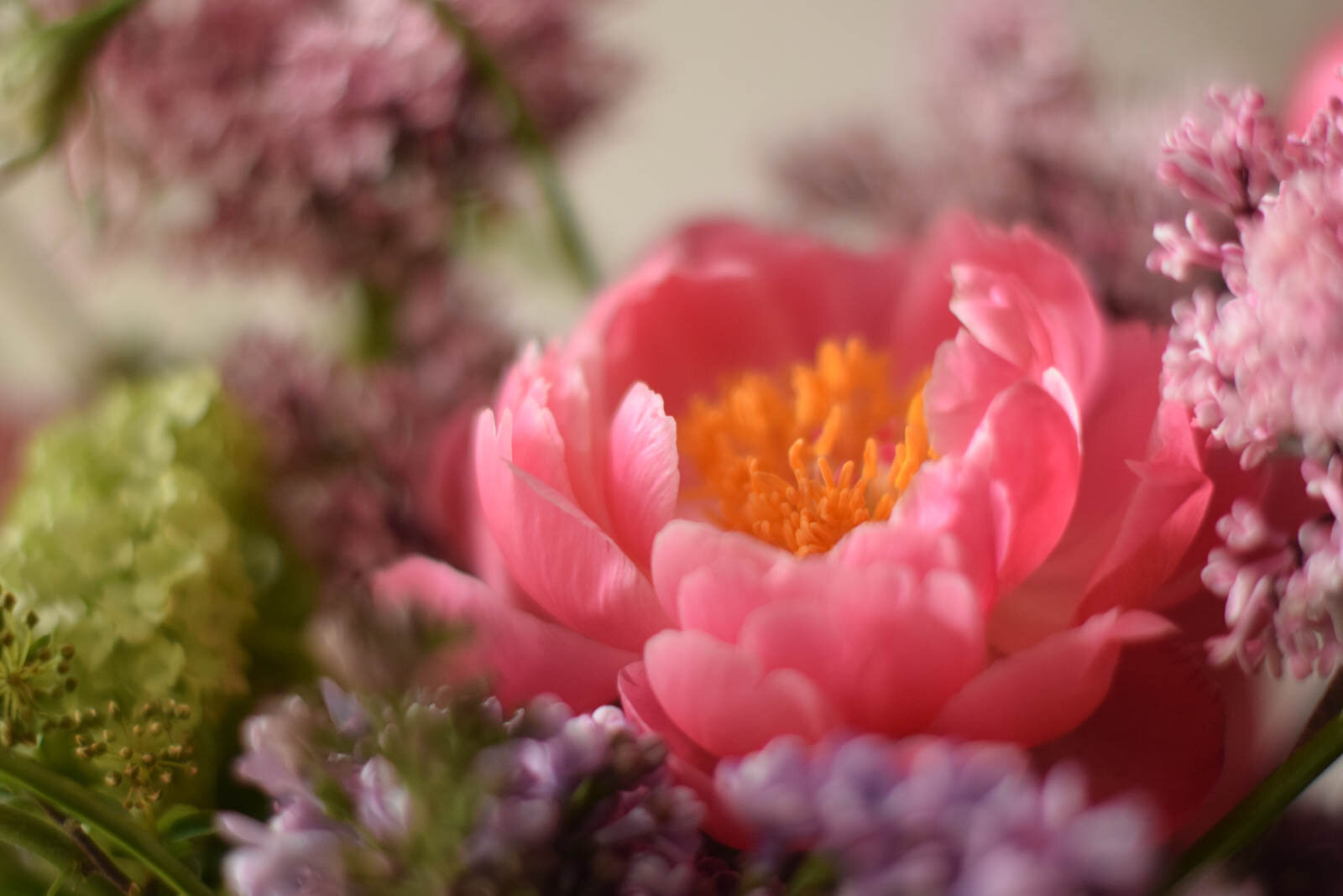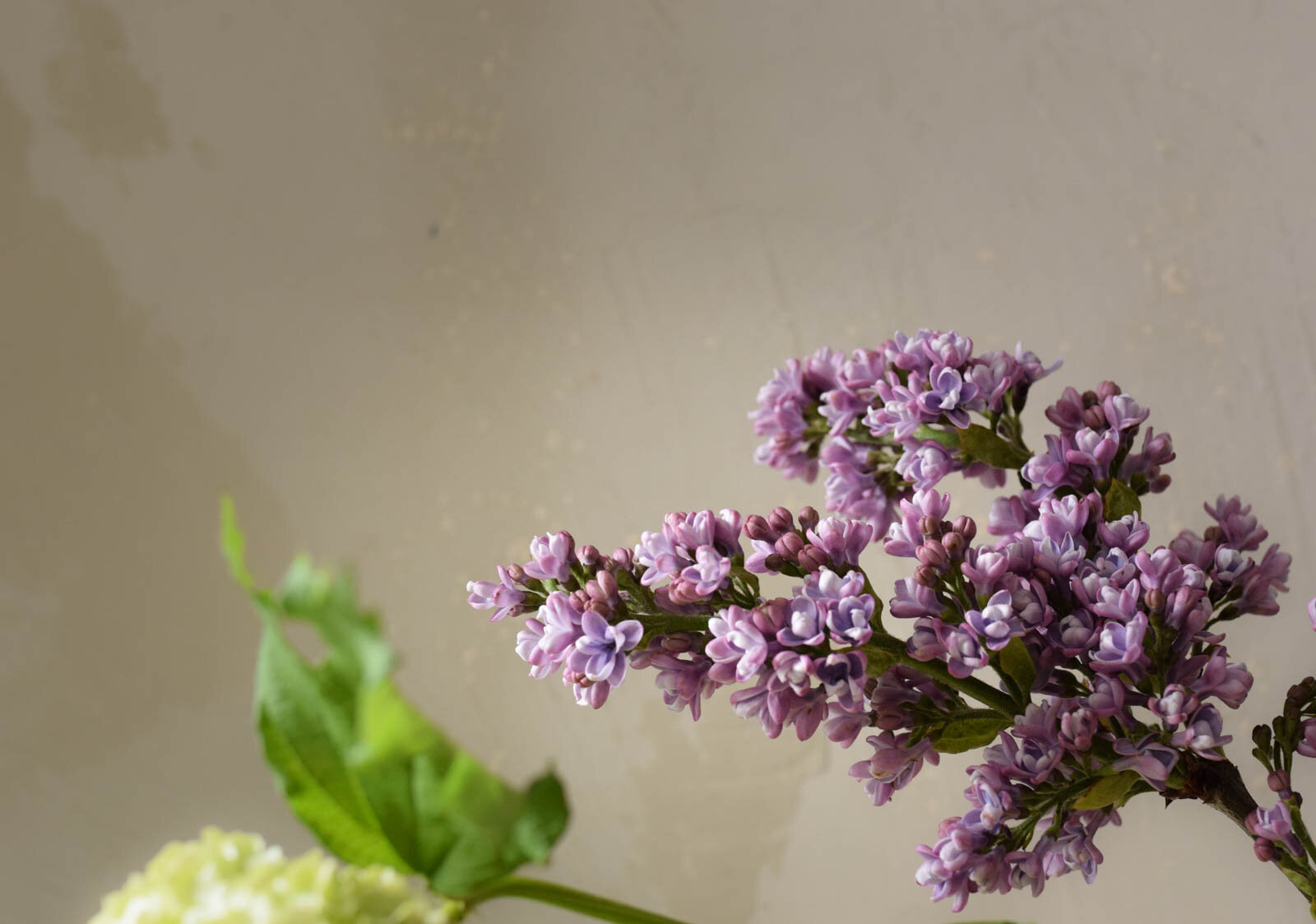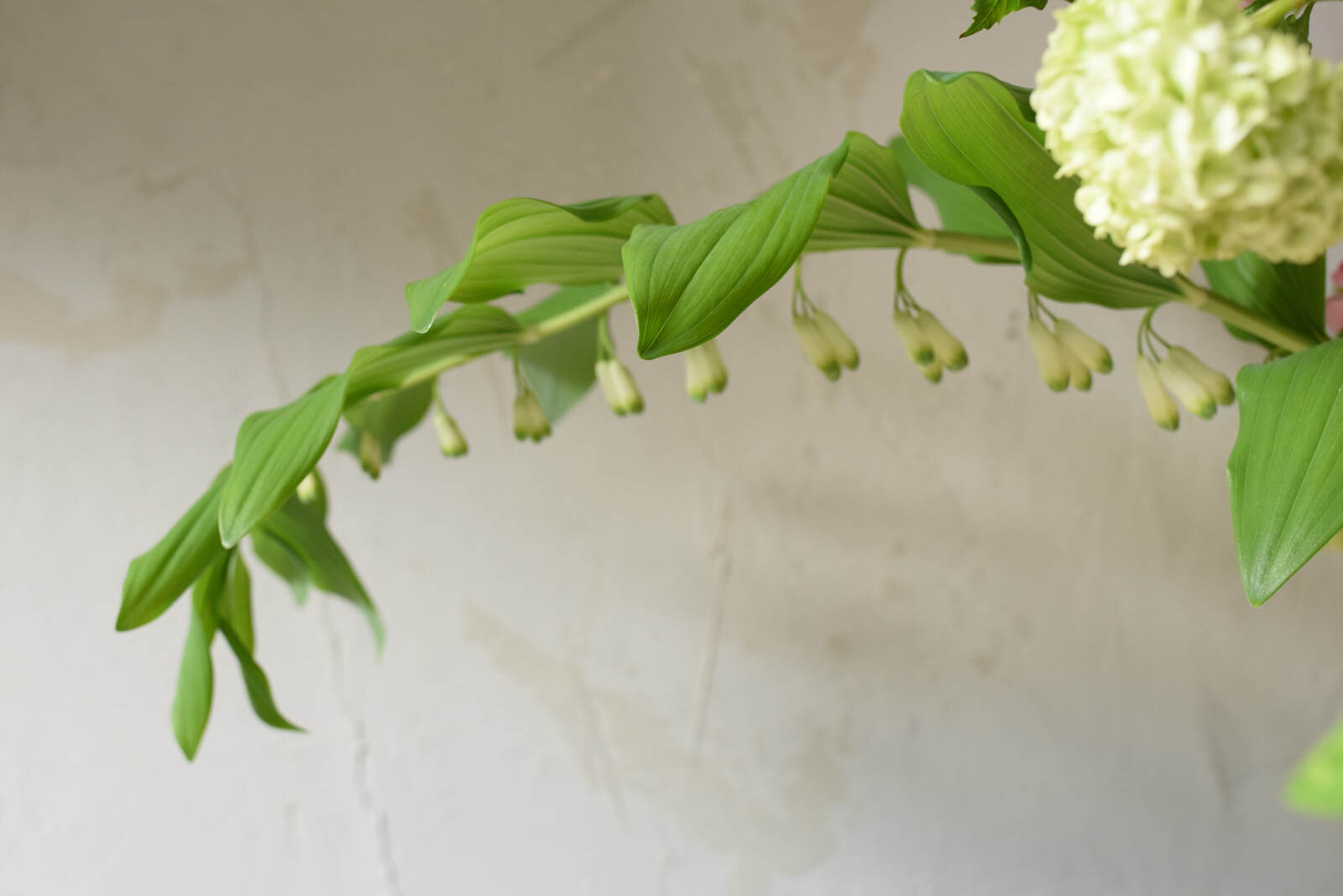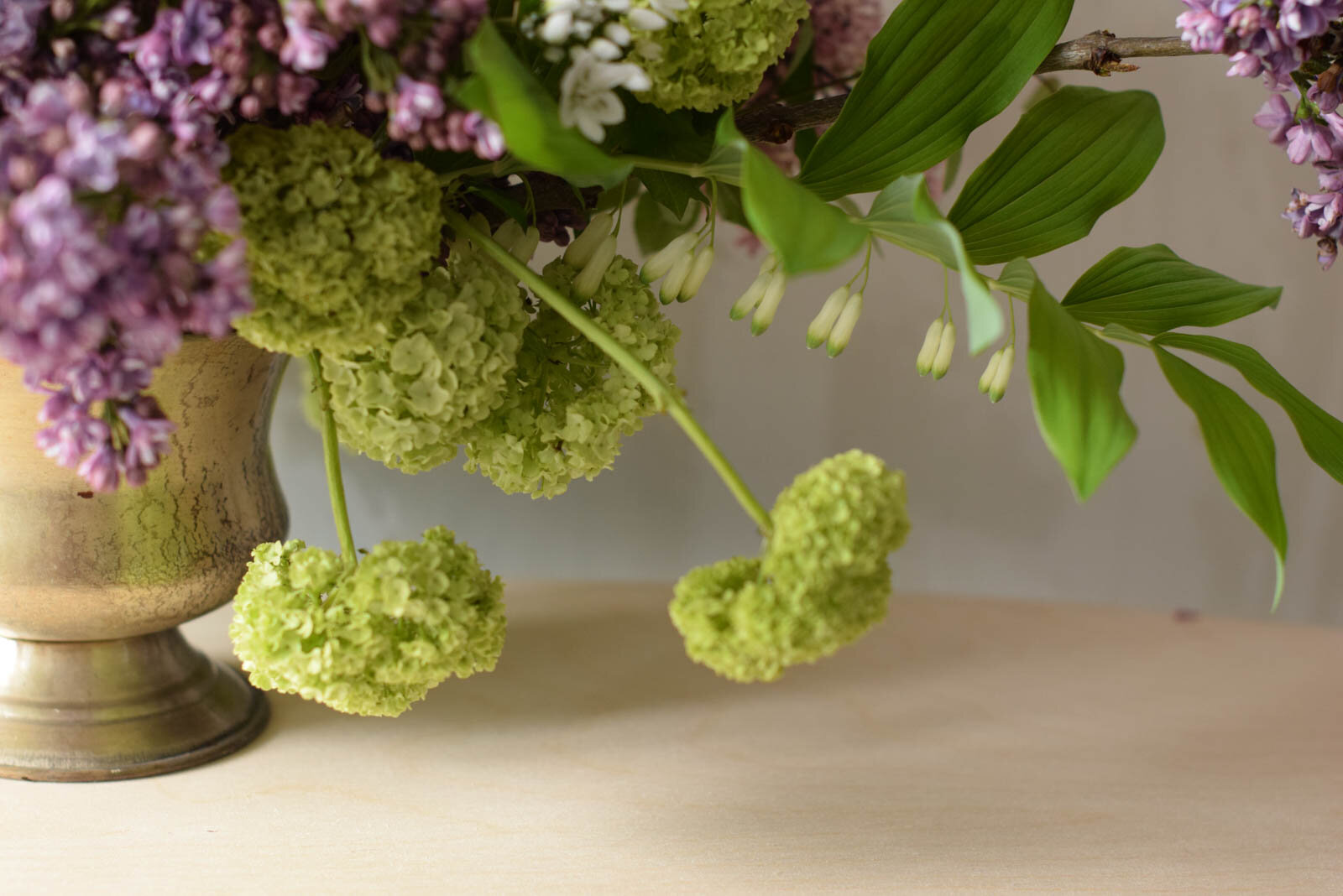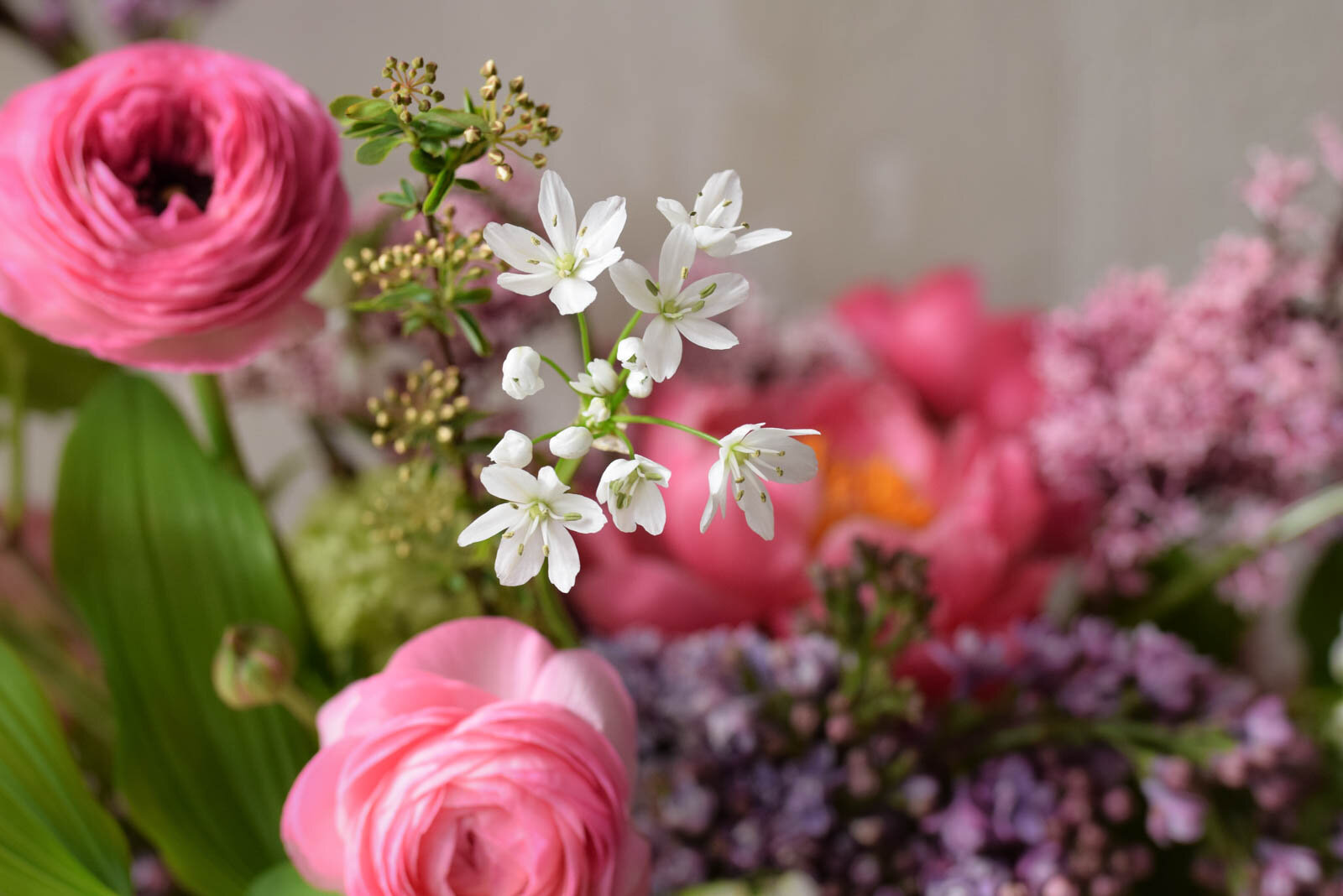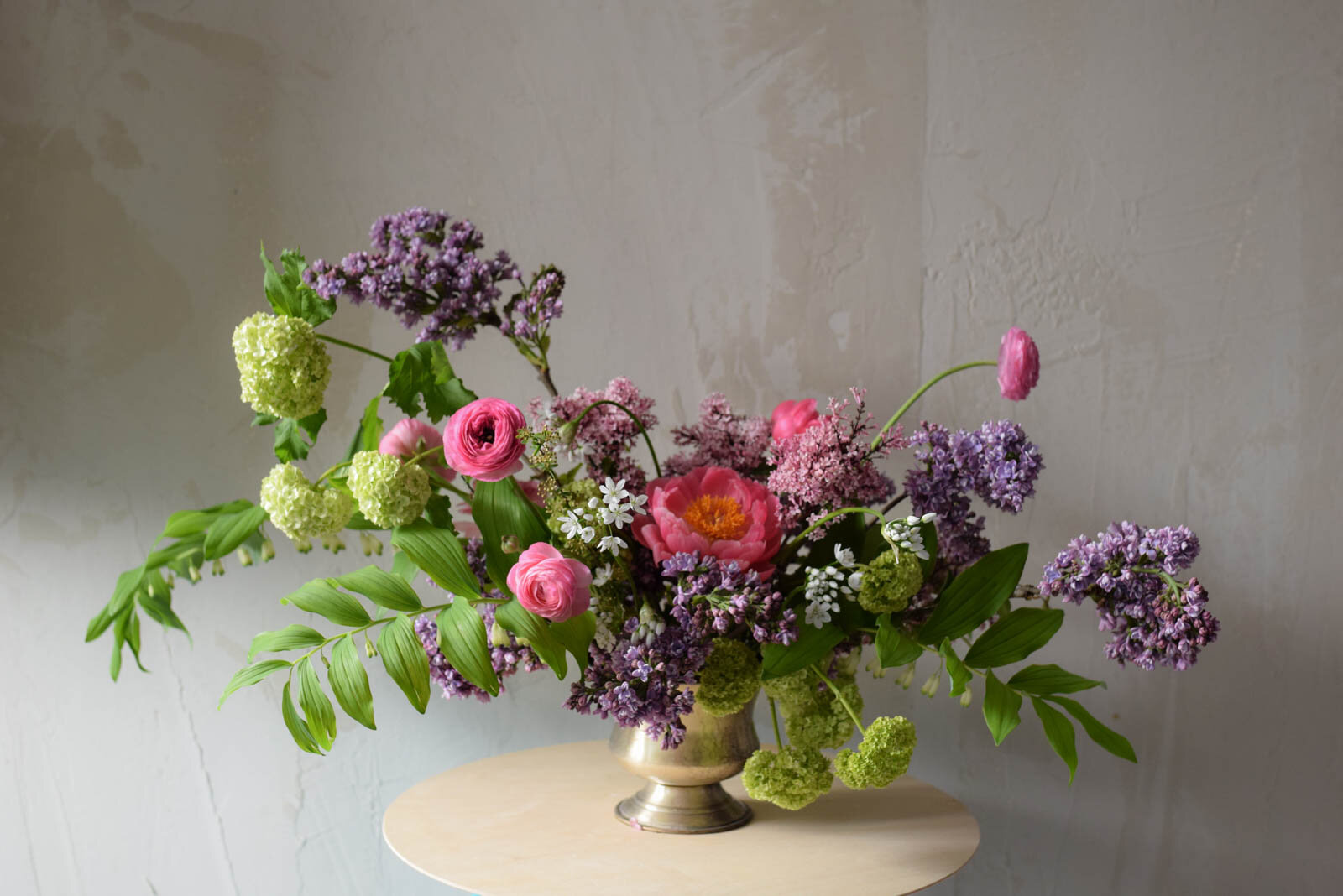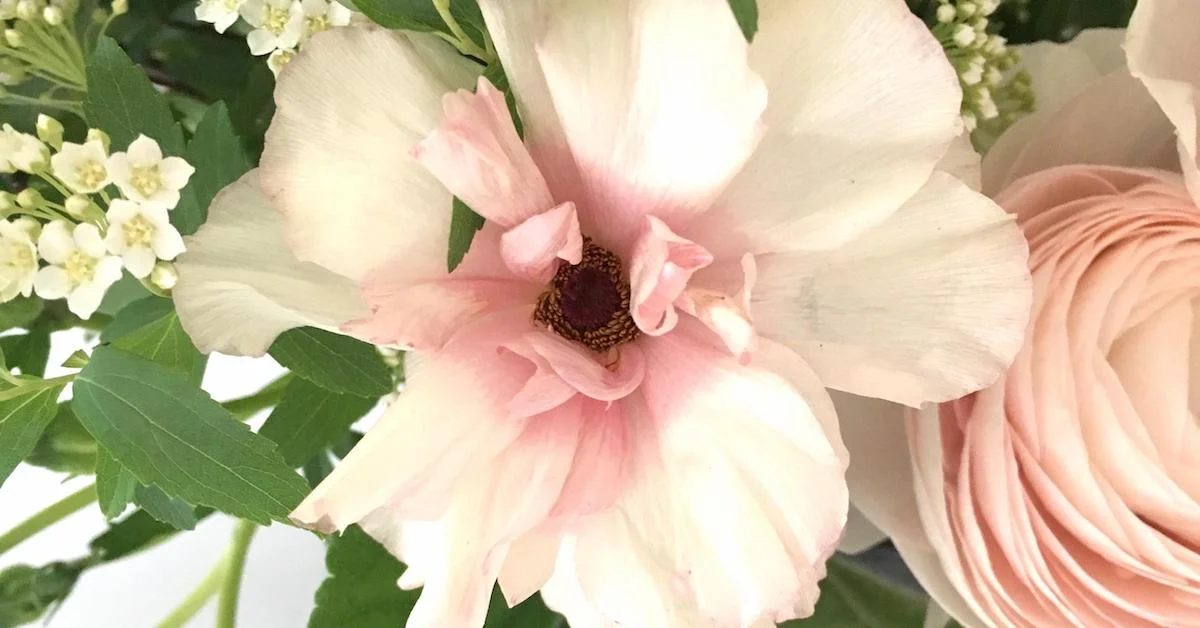Creating Functional Flower Recipes for More Efficient Ordering
It's been weeks since I've made a floral arrangement, and building this week's floral recipe with budding lilac and Solomon's seal feels like therapy.
Spring flowers are just about perfect, and they're coming. The lilacs and peonies will ripen. Nature's easy rhythm moves steadily on as if to say, "It's okay. There was always going to be hard times. See this gift now."
I see it right here in Solomon seal droplets so juicy that they look like they could burst. Lilac scent is easily my favorite. It’s luxurious.
I'd love to share with you this recipe for a luscious spring arrangement.
Not only do the flower selections in this recipe celebrate what is now (or yet to come), but the technique of using a flower recipe may be just what you need to become a stronger and more efficient flower orderer.
Flower prices in your area may vary, but I’ll include pricing information below.
The Why of Floral Recipes
If you've tried implementing flower recipes into your ordering and design process before and found it cumbersome, I get it. Read on for a new way to use flower recipes.
This spring arrangement reminds me of a time near the start of my floral business.
In the spring, I would walk my neighborhood in the early morning—clippers in hand. Any nodding lilac that happened to creep over a fence into the right of way would get snipped and tucked gently under my jacket.
At that time, the obstacles I faced involved the normal struggles with being new and not knowing what I was doing. My business's future was uncertain then, too. In fact, I almost gave up.
Instead, I took a good look at my problem processes (or lack thereof). The biggest one was my impulsive flower purchasing (and arguably, my lilac thievery). I didn't plan my arrangements, and I always over-ordered. I was so willing to be seduced by whatever was fresh and beautiful.
I over-ordered, so I overstuffed my arrangements.
I overstuffed my arrangements, which made my work underpriced.
I underpriced, so my profits were slim.
And at the base of it all was the lack of a plan. A plan for what to order and how much. A recipe.
I had seen floral recipes before, but they were never quite right.
My artist brain asked, "How could someone so lured by seasonality and the unexpected find at the flower market ever stick to a boring old recipe. That is the opposite of creativity?"
My business-owner brain answered, "Someone who wanted to stay in business."
My artist brain yawned.
So, a compromise was made—and I transformed my flower recipes into functional flower recipes.
Create Functional Flower Recipes
Functional flower recipes are like regular floral recipes, but instead of actual flower names and actual flower stem prices, you use placeholder names and generalized stem prices.
Here's how you make your own:
As you design, observe your personal method of sequence and placement of each flower.
Identify how you tend to use different kinds of flowers for various roles in your arrangements.
Make a list of each role in your arrangement and the quantity of stems for each role.
After your arrangement is made, grab the price sheet of your favorite go-to flower suppliers.
Jot down the other types of flowers that would also fulfill that role.
Average the price per stem (I tend to skew toward the high side) to find your stem price for that role.
Transfer your real flower recipe into a functional flower recipe.
Here's an example of both recipes side by side. You'll see they’re pretty close. I wasn't too far off by ordering flowers for this arrangement based on the functional flower recipe.
Here's how this particular arrangement works:
I tend to start with a foliage base or a base of large, sturdy flowers. In this case, I used 5 of the lilac stems and one extra-spriggy snowberry for additional support. My placeholder price for “base” flowers is $1.75 a stem.
Then I build out with secondary flowers to develop shape and depth. These may be a few types of flowers. Here I used the lighter Korean lilac, shorter viburnum, and shorter ranunculus. My placeholder price for “secondary” flowers is $1.00 a stem.
Next, I'll plan or place my focal flowers. Here I used peony. My placeholder price for “focal” flowers is $3.50 a stem.
Then I'll go back in with some type of specialty foliage for movement and expression. Here I used Solomon's seal/Polygonatum odoratum. My placeholder price for “specialty foliage” is $0.80 a stem.
I add some sprouty, airy pieces to get a wilder, naturalistic look and use the same flowers as the secondary flowers—just in a different way—longer and on the arrangement's outer layer. My placeholder price for “sprouty” flowers is $0.95 a stem.
Finally, if I think it needs it, I'll add some small bits for texture and some spilling draping bits to hang down over my vessel. I used Allium cowanii for my “texture” and small individual snowball viburnum for the “draping” pieces. My placeholder price for “texture” flowers is $0.90 a stem and $1.20 for draping flowers.
You likely have your own loose process you follow and naturally gravitate toward flowers with a similar “visual weight” for different roles in your arrangement.
Once you become aware of the role you need in an arrangement, you can have an idea quantity you will need without selecting the specific flowers.
It is like planning out a grocery shopping list for dinner and listing that you need to pick up protein, salad, starch, vegetable, dessert, and wine. As for the specifics, you will allow yourself to be inspired by what you find when you get to the store.
Plug those prices into a functional flower recipe, and you can get pretty close to the real cost.
Using functional flower recipes in this way allows you to make a pretty tight order list and enable you to come up with a profitable price before you go and order the flowers (great for wedding bids).
It's not perfect, but it's so much better than allowing flower-buying impulses get the better of you and your pocketbook.
The unseen benefit is the creative freedom you gain in leaving room to be inspired by an unexpected flower.







